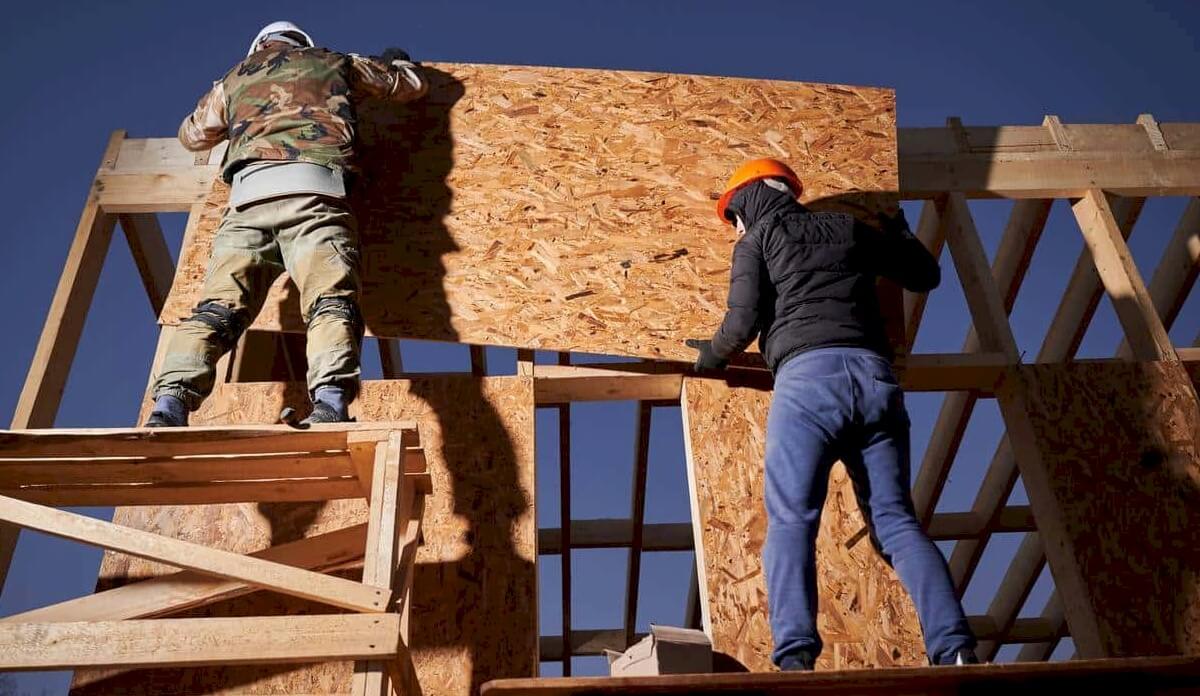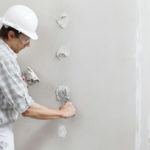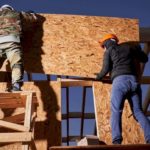
What Is OSB And How It’s Made
Welcome to the fascinating world of OSB manufacturing, where wood chips are transformed into high-quality panels that are strong, durable, and versatile. In this article, we will delve into the intricate journey of how OSB (Oriented Strand Board) is produced, from the initial collection of raw materials to the final product that is used in various industries.
Let’s uncover the meticulous process of converting wood chips into a reliable and sustainable building material that has revolutionized the construction and furniture industries. From blending wood strands to applying advanced adhesives, we will explore the innovative techniques and technologies used in OSB manufacturing. Whether you are a construction professional or simply curious about the manufacturing process, this article will provide valuable insights into the fascinating world of OSB production.
So, let’s embark on this journey and discover the hidden wonders behind creating OSB panels.
What is OSB?

OSB, or Oriented Strand Board, is an engineered wood panel made by compressing and bonding wood strands together using adhesives. It is composed of multiple layers of wood strands that are oriented in different directions to enhance its strength and structural integrity. OSB is commonly used as a substitute for plywood in various applications, including wall sheathing, flooring, and roofing. It is known for its superior strength, dimensional stability, and affordability, making it a popular choice in the construction industry.
The history of OSB manufacturing The production of OSB can be traced back to the 1970s when it was first developed as a cost-effective alternative to plywood. The initial manufacturing process involved using a single layer of randomly oriented wood strands, resulting in a weaker and less consistent product than plywood. However, advancements in technology and manufacturing techniques have led to significant improvements in the quality and performance of OSB over the years.
In the 1980s, the introduction of oriented strand technology revolutionized the OSB manufacturing process. This technique involved aligning the wood strands in specific orientations, significantly enhancing the final product’s strength and durability. As a result, OSB became a viable alternative to plywood, offering comparable performance at a lower cost. Since then, OSB has gained widespread popularity and has become essential in the construction and furniture industries.
The raw materials used in OSB manufacturing The production of OSB starts with the collection of raw materials, primarily wood chips. Wood chips are obtained from various sources, including sawmills, logging operations, and wood processing facilities. These wood chips are typically made from low-value timber species or byproducts of the lumber industry, ensuring that OSB manufacturing contributes to the sustainable use of forest resources.
The wood chips used in OSB manufacturing undergo a series of processes to prepare them for the production of high-quality panels. First, the wood chips are sorted and screened to remove impurities, such as bark, leaves, and other debris. Next, the wood chips are dried to reduce their moisture content, which helps to enhance the strength and stability of the final product. The drying process also helps prevent mold and fungi growth, ensuring the OSB panels’ longevity.
Once the wood chips are sorted and dried, they are then blended with synthetic resins and other additives. These additives play a crucial role in enhancing the performance and durability of the OSB panels. The most commonly used resin in OSB manufacturing is a phenol-formaldehyde adhesive, which provides excellent bonding strength and resistance to moisture. Other additives, such as waxes and fire retardants, may also be incorporated to enhance the properties of the OSB panels further.
The process of manufacturing OSB The manufacturing process of OSB involves several intricate steps that transform wood chips into high-quality panels. The process begins with blending wood strands, which are created by shredding the wood chips into long, thin strands. These wood strands are then mixed with synthetic resins and additives in a process known as blending.
The blended wood strands are then spread onto a moving conveyor belt, forming a continuous mat. The wood strands are carefully aligned in specific directions to ensure optimal strength and dimensional stability during this process. Once the mat is formed, it passes through a series of rollers that compress and consolidate the wood strands, removing excess moisture and adhesive.
After the initial compaction, the mat enters a hot press, where heat and pressure are applied to further bond the wood strands together. The hot press cures the adhesive, creating a strong and durable panel. The duration and intensity of the heat and pressure applied during the hot press phase can vary depending on the desired properties of the OSB panels.
Once the panels are cured, they are trimmed to the desired dimensions and undergo a final inspection. Quality control measures are implemented at every stage of the manufacturing process to ensure that the OSB panels meet the required specifications and standards. Panels not meeting the quality requirements are rejected and either recycled or used for lower-grade applications.
Quality control in OSB manufacturing Quality control is a critical aspect of OSB manufacturing to ensure that the panels meet the required strength, durability, and dimensional stability. Throughout the production process, various quality control measures are implemented to monitor and maintain the quality of the OSB panels.

One of the primary quality control measures is the testing of raw materials. Before the wood chips are blended with the resins and additives, they undergo rigorous testing to ensure they meet the required standards. This includes testing the moisture content, size distribution, and cleanliness of the wood chips.
During the blending process, the consistency and uniformity of the wood strands are closely monitored. The wood strands must be evenly distributed and properly aligned to ensure the strength and dimensional stability of the final product. Any variations or inconsistencies in the wood strands can significantly affect the quality of the OSB panels.
Once the panels are produced, they undergo a series of tests to assess their mechanical properties, such as strength, stiffness, and moisture resistance. These tests involve subjecting the panels to bending, tension, and compression forces to evaluate their performance under different conditions. The panels are also tested for formaldehyde emissions and other environmental factors to ensure that they comply with the required regulations and standards.
Environmental considerations in OSB manufacturing The production of OSB is focused on creating a high-quality and durable product and minimizing the environmental impact. OSB manufacturing has several environmental advantages compared to traditional wood products, making it a sustainable choice for construction and furniture applications.
One of the key environmental advantages of OSB is its efficient use of raw materials. Wood chips used in OSB manufacturing are typically sourced from low-value timber species or byproducts of the lumber industry. Using these materials, OSB manufacturing helps reduce waste and promote the sustainable use of forest resources.
Additionally, the production process of OSB requires less energy and water compared to other wood products, making it a more environmentally friendly option. Advanced manufacturing techniques and technologies have enabled OSB manufacturers to optimize energy and water consumption, further reducing the carbon footprint of the production process.
Furthermore, OSB panels are highly recyclable and can be used as a raw material in producing new panels or other wood products. This closed-loop recycling process helps minimize waste and conserve natural resources. At the end of their life cycle, OSB panels can also be used as a biofuel, contributing to generating renewable energy.
Applications and uses of OSB OSB panels have a wide range of applications and are used in various industries, including construction, furniture manufacturing, and packaging. OSB’s strength, durability, and affordability make it a popular choice for structural and non-structural applications.

In the construction industry, OSB panels are commonly used as roof decking, wall sheathing, and subflooring. OSB’s dimensional stability and moisture resistance make it an excellent choice for these applications, providing a reliable and durable solution for building structures. OSB panels can also be used for interior finishes, such as wall paneling and ceiling tiles.
In the furniture manufacturing industry, OSB panels are used as a substrate for laminated furniture components, such as tabletops, shelves, and cabinets. The strength and stability of OSB make it an ideal material for supporting heavy loads and ensuring the longevity of furniture pieces. Additionally, OSB panels can also be used for decorative purposes, with various finishes and coatings applied to enhance their appearance.
Beyond construction and furniture, OSB panels are also used in packaging applications, such as crates and pallets. The high strength and rigidity of OSB make it suitable for protecting and transporting goods, ensuring their safe delivery. Additionally, OSB panels can also be used in temporary structures, such as exhibition booths and event stages, due to their versatility and ease of assembly.
The future of OSB manufacturing The future of OSB manufacturing looks promising, with ongoing advancements in technology and sustainable practices. As the demand for environmentally friendly and cost-effective building materials continues to grow, OSB is expected to play a significant role in the construction industry.
One development area in OSB manufacturing is using alternative raw materials. Researchers and manufacturers are exploring using agricultural residues, such as straw and sugarcane bagasse, as substitutes for wood chips. These alternative raw materials offer several benefits, including reduced reliance on forest resources and improved thermal and acoustic properties of the OSB panels.
Furthermore, advancements in adhesive technology are also being explored to enhance the performance and sustainability of OSB. The development of formaldehyde-free adhesives and bio-based resins are gaining traction in the industry, reducing the environmental impact of OSB manufacturing and addressing concerns related to indoor air quality.
Conclusion OSB manufacturing is a complex and intricate process that transforms wood chips into high-quality panels used in various industries. From blending wood strands to applying advanced adhesives, each step in the manufacturing process plays a crucial role in creating a reliable and sustainable building material. OSB panels have revolutionized the construction and furniture industries, offering superior strength, dimensional stability, and affordability compared to traditional wood products.
With ongoing advancements in technology and sustainable practices, the future of OSB manufacturing looks promising, paving the way for more innovative and environmentally friendly solutions in the construction industry. So, the next time you see an OSB panel, take a moment to appreciate the intricate journey it has gone through, from wood chips to a robust and versatile building material.



